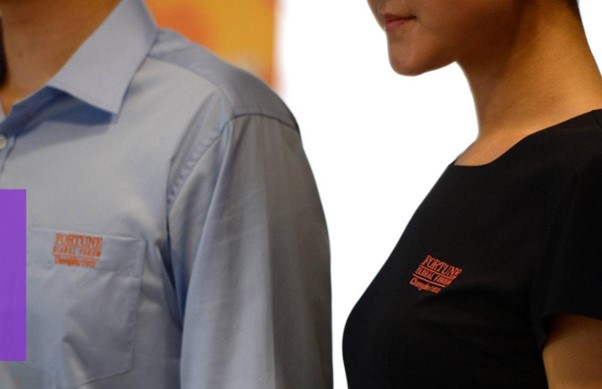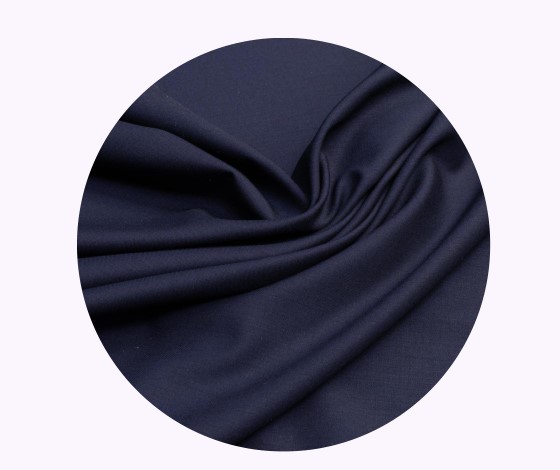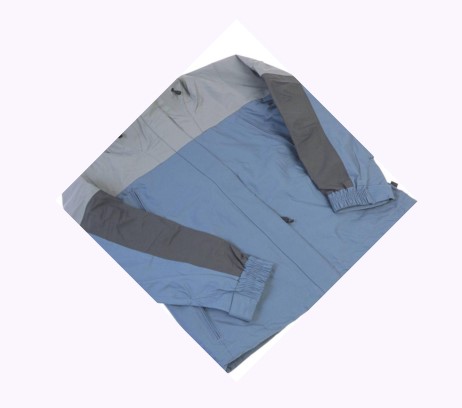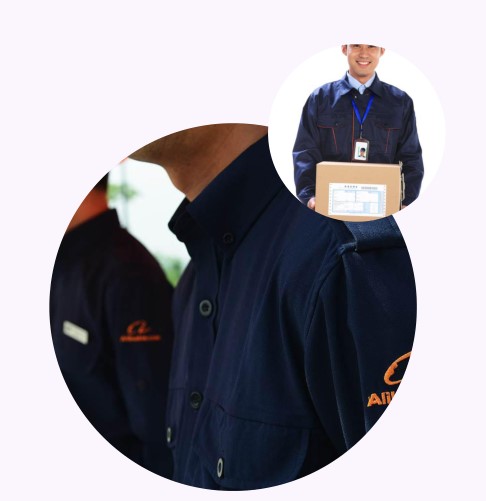How to Make Custom Workwear: A Step-by-Step Guide
Published On: May 29, 2024 By: chen hui

Usually, workwear can represent the entire spirit and image of the entire company. But how to customize workwear step by step? Here, we – Aung Crown, a professional hat & garment manufacturer since 1998, will introduce how to customize workwear step by step as the following content.
1. Analysis of custom workwear requirements
2. The design and style of the workwear
3. The choice of fabrics
4. The process of making custom workwear
5. The budget for custom workwear
6. After-sale service of custom workwear
1. Analysis of custom workwear requirements
First of all, please research the preferences and requirements of your employees regarding workwear in terms of style, color, fabric, etc. It’s better to know the personal requirements and the common requirements.

The Requirement of Your Employees
For example, when researching whether your employees have special requirements about work wear, such as antistatic, waterproof, breathability, etc.

The analysis of industry trend
The second is to analyze the trend of workwear trend and the styles and features of workwear in the current market. And the standards of the workwear industry such as the regulation and requirement of safety, hygiene, eco issues, etc.

Clarify your brand identification
According to your brand culture and image, make sure the style, color, fabric, etc. of the work wear. Consider the design elements of the workwear, such as logo, pattern, buttons, etc., to emphasize the brand image and value.
2. The design and style of the workwear

The design theory
- The Enterprise’s Culture: The workwear should represent the main value and cultural context of the enterprise, representing the enterprise’s image.
- The Sense of Identity: The design of workwear should take into account the aesthetics and personality of employees, which can give them a sense of identity and pride in their workwear.
- Functional Requirements: According to the requirements and characteristics of work, the design of work clothes should be comfortable, practical, and convenient for activities.

Color combination
- The color of the brand logo: Please check the same color scheme as the same as the logo to maintain the cohesion of the brand.
- The Trendy Seasonal Color: According to the seasonal and popular trend, choose suitable colors to complement the logo to make the workwear more stylish.
- Color psychology: Utilize color psychology to choose the color that can create positive emotions for your employees.

Pattern choice
- The brand logo: Printing the brand logo on the workwear to enhance the brand identity.
- Lucky patterns: Choosing patterns that have beautiful or positive meanings, such as Chinese knots or bats, to place good wishes on.
- Abstract patterns: Using simple or abstract patterns to enhance the sense of art and design.

Detailed treatment
- Quality fabrics: Choose quality and comfortable fabrics to ensure durability and comfort.
- Fine workmanship: Pay attention to workmanship and detailed treatments such as threads, buttons, necklines, cuffs, etc.
- Customizable elements: Customizable elements such as names, working positions, numbers, etc.
3. The choice of fabrics
Fabric types

1. Cotton: Highly breathable, moisture-wicking, and comfortable to wear. It tends to wrinkle.
2. Polyester: Great in wear resistance, wrinkle resistance, and easy to maintain. It’s poor in breathability.
3. Linen: Great in breathability and moisture wicking. It’s very easy to wrinkle.
4. Silk: Smooth and soft with luster. It’s prone to wrinkling and needs professional care.

Fabric Features
- Comfort: Choose comfortable, soft fabrics that won’t irritate your skin and can be worn for long periods.
- Durability: It is recommended to choose durable, hard-wearing, and wrinkle-resistant fabrics that can withstand wear and tear during work.
- Function: According to the working needs, fabrics should be antistatic, waterproof, antimicrobial, etc.

Price of fabrics
- Premium Fabrics: Premium fabrics are quality fabrics with full features. But the price is quite high.
- Middle fabrics: The quality and function of middle fabrics are in the middle range, suitable for most workplaces.
- Poor fabrics: The price of poor fabrics is low, but the function is quite poor and they have a short life span.

Sustainability
- Regenerated resource: It’s before choosing regenerated fabrics like organic cotton, linen, etc.
- Eco-process: It’s best to choose fabrics that can be eco-processed, such as no-water dyeing or eco-printing.
- Waste treatment: It’s recommended to choose recyclable fabrics to reduce the burden on our planet.
4. The process of making custom workwear

Customize by size
- Measuring Sizes: According to the size of the staff, tailor exactly to ensure the fit.
- Custom Details: According to customer demand, confirm the style, color, and fabric of the work clothes to meet the personal demands of customers.

Template Production
- Design drawing: Design a drawing that can meet the customers’ requirements according to their detailed demands.
- Sample making: According to the design drawing, make a sample for the customer to confirm and adjust by the feedback from the customer.

Quality control
- Quality Standard: The manufacturing process strictly ensures that all garments can meet the quality standards.
- Quality Testing: Testing the workwear to pass many quality tests, including fabric quality and workmanship, to ensure that the workwear can meet all customer requirements.

Product delivering
- Packaging Design: According to customers’ needs, we arrange reasonable packaging for shipping to ensure there is no damage during shipping.
- Product Delivery: Based on the delivery time and address that we confirmed before to deliver the products for our customers and provide after-sale service for our customers to ensure their satisfaction.
5. The budget for custom workwear
Making a budget
- Confirm the style: The first step is to confirm the style, color, and fabric of the uniforms to create a reasonable budget.
- Check the market price: It’s better to know the market price first, including different prices for different fabrics, crafts, and brands.
- Extra budget: Consider that there might be some extra charges such as revision, replenishment, or rush orders. The extra budget can solve these problems perfectly.

Budget control
- Select appropriate fabrics: Based on requirements and budget, select cost-effective fabrics to avoid unnecessary waste.
- Optimize the crafts and details: Under the premise of meeting the basic functions and aesthetics, please simplify the crafts and details to reduce the cost.
- Customize in bulk: If possible, please customize in bulk order, which can get a better and cheaper price.

Cost detail
- Fabric Costs: List the cost of various fabrics, including unit cost and total cost.
- Craft Fees: Detail the cost of any crafting, such as embroidery, printing, riveting, etc.
- Other Fees: This section includes the remaining fees, including packaging, shipping, taxes, or other additional fees.
6. After-sale service of custom workwear

Size adjustment
- After our after-sale receive their work wear, if there is any unfit work wear, please contact our after-sale service to adjust the size.
- Our after-sale service will, based on the size information from our customers, revise or reproduce the garment again to ensure the fit.
- During the revision or reproduction process, customers need to pay extra fees including the cost of fabric and workers. The actual extra cost is according to the real situation.
Guideline for care
- Our after-sale service provides guidelines for washing and maintaining workwear to ensure its durability.
- Customers must follow these guidelines to avoid damage or fading to the workwear.

Quality permission
- During the production of workwear, we adopt fabrics and crafts that meet the requirements and standards.
- Our staff in charge of quality control will check each garment in detail to make sure that each of them meets the requirements and standards.
- If we find any problem, our after-sale service will contact our customers immediately, and we will take our mistake and give the solution at the same time.

Customers’ feedback & our improvement
Our after-sale team will collect all the feedback from our clients and we will take measures to improve our cons and optimize them in the future.
The feedback from our customers is important for us to improve and optimize our service.
In the end, all above is the complete process for customizing workwear.
